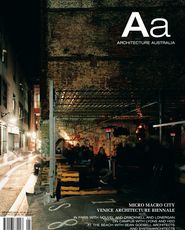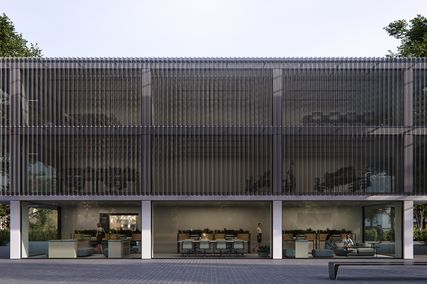One of the most common criticisms of the architectural photographs published in magazines like this one is that they often frame out context, presenting the architectural project as an isolated, abstracted object. This mode of representation is a symptom of a broader paradigms in architectural culture – although much architecture involves careful and considered responses to the broader built environment, it is not often discussed or pictured in these terms.
(Or else banal appeals to context are seen as a refuge for fairly ordinary works of architecture.)
It is therefore particularly interesting to explore the texts, images and drawings prepared for Micro Macro City, the exhibition for the Australian Pavilion at this year’s Venice Architecture Biennale. Excerpts of this are presented in this issue. Creative directors Shane Murray and Nigel Bertram address Richard Burdett’s theme of “Cities. Architecture and Society” by presenting case studies of eight everyday urban situations alongside twelve extraordinary architectural projects. These projects each, in varying ways, respond to one of the eight themes drawn out of the case studies. The case study places are documented through detailed three-dimensional drawings, evocative description and artists’ photographs. The architectural projects are pictured and discussed in ways which demonstrate their engagement with their localities, while also celebrating their architectural strengths. The exhibition also includes exquisitely drawn site plans showing each project in its wider urban context, of which we are only able to give a hint in our coverage.
The juxtaposition of these remarkable architectural works with beautifully documented everyday environments is a fundamental strength of the project.
In rubbing up against each other, each forces us to rethink the other. Here, the everyday seems anything but ordinary. We are invited to relook at our built environment and to see it as a rich and intriguing source of information; to look closely as we perambulate or drive; and to rethink hackneyed distinctions between city, suburb and countryside. The exhibition also suggests that we speculate on how architecture might engage with such places. What might it offer to localities like Rainbow or Epping? What kind of architecture can activate such environments rather than frame them out?
In turn, the presence of these case study places demands that we interpret the architectural projects through complex frames of reference, which include the contribution these projects make to conceptions of the urban, and the way in which they might enhance or challenge their particular everyday contexts.
Undoubtably the exhibition itself will be richer still. Site plans, audio-visual material and the design of the exhibition itself will add further layers. This will be reviewed in the next issue of Architecture Australia. In the meantime the material prepared for the exhibition, and shown here, promises to present an important challenge to international cliches about Australian architecture.
But, significantly, it also present a challenge to us in Australia. Careful consideration of our ordinary environments can lead to some extraordinary work, and much richer everyday environments.
JUSTINE CLARK















